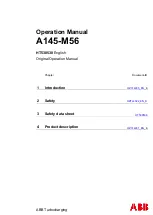
14
Alternator test (12 Volt only)
1. With the charger OFF and clamps properly hooked to the battery, start the engine and while running at fast
idle, press the Test Switch.
2. Read the alternator condition on the alternator test scale at the upper right section of the test meter. The
battery should be in a good state of charge before attempting this test.
3. The three zones of the meter indicate the following:
OK: Charging system is performing properly
LOW: Loose fan belt, or voltage regulator and/or alternator faulty
HIGH: Faulty voltage regulator or wiring harness
Pre-Charge Battery Activation
Some modern batteries can cause charging problems if they have been deeply discharged. The plates in these
batteries can begin sulfating quickly, forming a barrier to accepting a charge. This condition will be indicated by
an extremely low (or zero) ammeter reading. A deeply discharged battery such as this may take as long as 4 to 8
hours before it will accept a charge. When charging a battery with this condition, set the Rate Selector for a
moderate charge rate and check on the battery every 30 minutes. When the sulfate barrier has been broken
through, the battery will begin accepting a charge and the ammeter will register a higher, normal charging rate.
The amount of time to charge the battery fully (determined in
Charging Time Instructions
) begins when the battery
begins accepting a charge. If necessary, reset the timer (if your charger is so equipped) to the length of charging
time required, after the battery begins accepting a charge.
Manual-to-Automatic Models
When pre-charge battery activation is required for the OS6140 automatic model, charging will not begin in the
automatic on/off mode. Always perform pre-charge battery activation in manual by setting the timer for 30 minutes
at a time. When the ammeter indicates that the battery is accepting a charge, reset the timer for the desired length
of manual charging time, or select automatic on/off if you desire immediately automatic control over the charging
process.















































